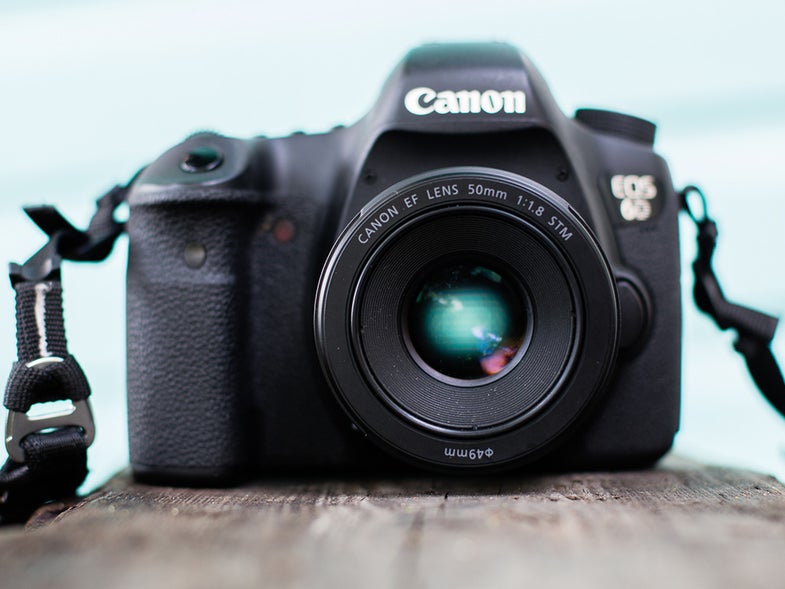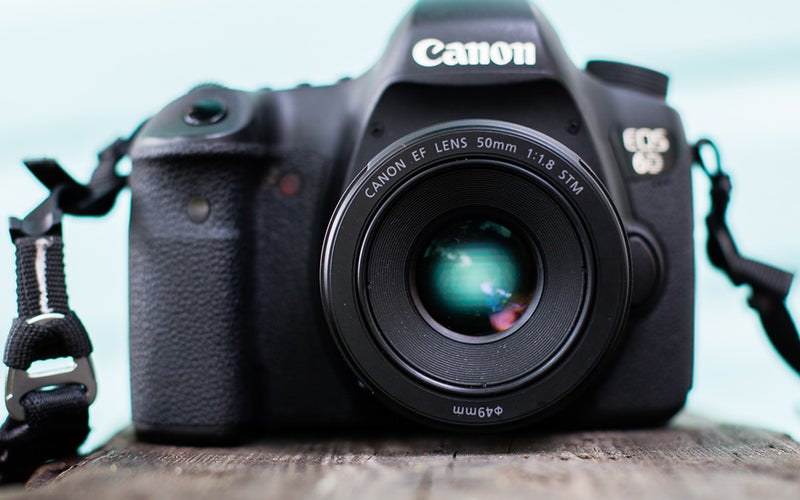Hands-On: Canon 50mm F/1.8 STM prime lens
We spent some quality time with Canon's $129 standard lens.

We may earn revenue from the products available on this page and participate in affiliate programs. Learn more ›
Stan Horaczek
I’m a sucker for the 50mm field of view, so I have spent some time with just about every 50mm full-frame lens option that is available for Canon bodies. When the new “nifty fifty” was announced, I was pretty excited, and now that I have had some time to shoot with it in a variety of situations, I’m actually pretty impressed. Here are some sample images along with some shooting impressions. Look for our full lab test in the upcoming issue of Popular Photography.
All photos were shot on a Canon 6D and were exported at full resolution from Adobe Lightroom without editing (unless otherwise noted in the caption).

F/5.6 at 1/2000th sec. ISO 100
It seemed to me that the sharpness really maxes out around F/4. This was shot under bright, contrasty sunlight, which explains the super fast shutter speed. Even at F/5.6, it gives some nice separation between subject and background.

F/8 at 1/100th sec. ISO 100
The entire bouquet of buoys is in very nice sharp focus and it has already begun to fall off before hitting that walk sign a few feet behind it. It didn’t draw a lot of contrast out of the flat scene, but that’s easily punched up later in post.

F/8 at 1/100th sec. ISO 100

F/2.8 at 1/100th sec. ISO 320
The focus is set near the front-center of the main pink starfish and, as you can see, at F/2.8 we get a relatively shallow depth of field, which I find pretty pleasing. As we fall off into the blurry sections of the photo, the bokeh isn’t the smoothest I’ve seen, but it’s also not harsh, even with the bright neon colors.

F/2 at 1/40th sec. ISO 100
It’s obvious that we’re not getting quite the same sharpness that it offers at F/4 and beyond, but the relative sharpness is still very acceptable.

F/16 at 1/30th sec. ISO 100
At F/16, you get nice sharpness throughout the frame and, although I was expecting things to get a bit gnarly where the buildings hit the sky, the edges of the buildings actually seem surprisingly clean. You get a surprising amount of detail in the buildings even though they’re far off in the distance.

F/2.8 at 1/160th sec. ISO 100
In this instance, I was curious what kind of vignetting we would get and I wasn’t surprised to see it start creeping in by F2.8. The 50mm F/1.8 has always had some vignetting, which I think a lot of people found to be part of its charm. The new STM version seems to continue that tradition, so if you’re one of those shooters who hates lens vignetting, you should be prepared to apply the lens profile in post, especially when you’re shooting wide open.

F/2.8 at 1/200th sec. ISO 100

F/1.8 at 1/2000th sec. ISO 100
As you’d expect, the focus falls off extremely quickly, but the sweet spot of the image is actually very sharp. There’s a ton of detail in the engraved letters. It even handled those bright pink flowers hiding back in the bokeh rather well.

F/2.2 at 1/160th. sec. ISO 100
Combined with new higher-megapixel DSLRs, it gives you some more creative cropping options. Here, I underestimated how shallow my depth of field was really going to be at F/2.2 using the close focus. The starting image is a bit flat once again, shot in open shade on a sunny day.

F/2.2 at 1/640th sec. ISO 100
Even this close to the maximum aperture, the in-focus area is impressively sharp. The bokeh in the top left corner gets a little harsh, but that’s likely due to the extremely high-contrast nature of the subject.

F/8 at 1/250th sec. ISO 100
There’s a ton of sharp detail in the leaves of the trees, but more importantly, the edges between the leaves and the sky aren’t a mess of aberration. It’s not quite as challenging as if they highlights had been totally blown, but still a pretty admirable job done by the coatings.

F/2 at 1/160th sec. ISO 100
For this image, I punched up the contrast a bit and adjusted the exposure, so you can start to see the vignetting be more apparent during editing (it’s not difficult to remove, but I chose not to for the sake of illustrating the lens performance). The softness at the top and bottom of the frame are likely due to me tilting the camera slightly and eschewing the plane of focus.

F/3.5 at 1/80th sec. ISO 100

F/1.8 at 1/1250 sec. ISO 100

F/2.0 at 1/125 sec. ISO 800

F/2 at 1/1250 sec. ISO 1000
In this case, the light was very dramatic, but it came out of the lens looking very manageable. Normally, I would need to slightly tone down the contrast a portrait shot in under these lighting conditions if I was using the 50mm F/1.2 or the new Sigma F/1.4.

F/5.6 at 1/250th sec. ISO 800

F/1.8 at 1/2000th sec. ISO 800

F/1.8 at 1/1000th sec. ISO 800

F/1.8 at 1/1600th sec. ISO 3200

F/2.8 at 1/4000th sec. ISO 100
Here’s an example of a shot taken specifically to induce flare and it’s still not that severe. Even in portrait situations, there were times when I expected a wash of flare to take over the frame, but it didn’t happen. If that’s something you hate, then you’re in luck, but if you want that effect, you might have to invest in a crummy UV filter to put over the front lens to bring it back.

